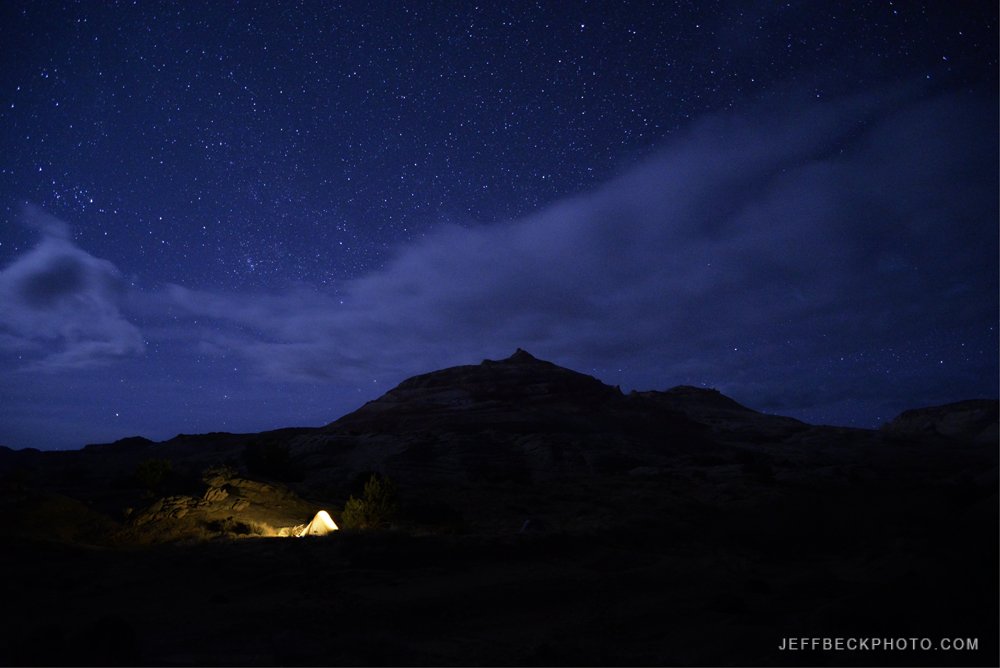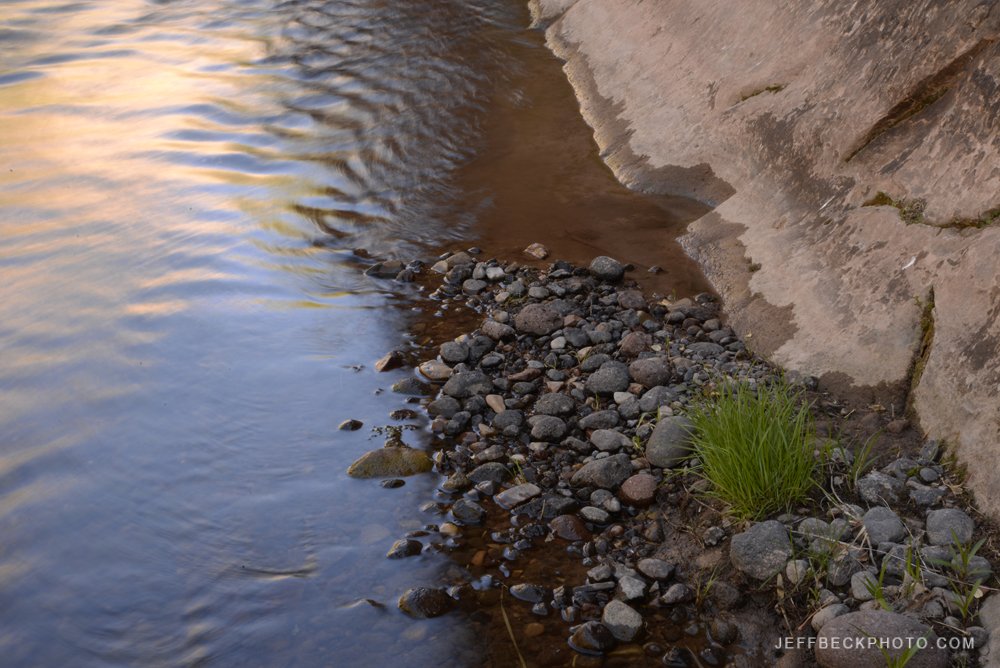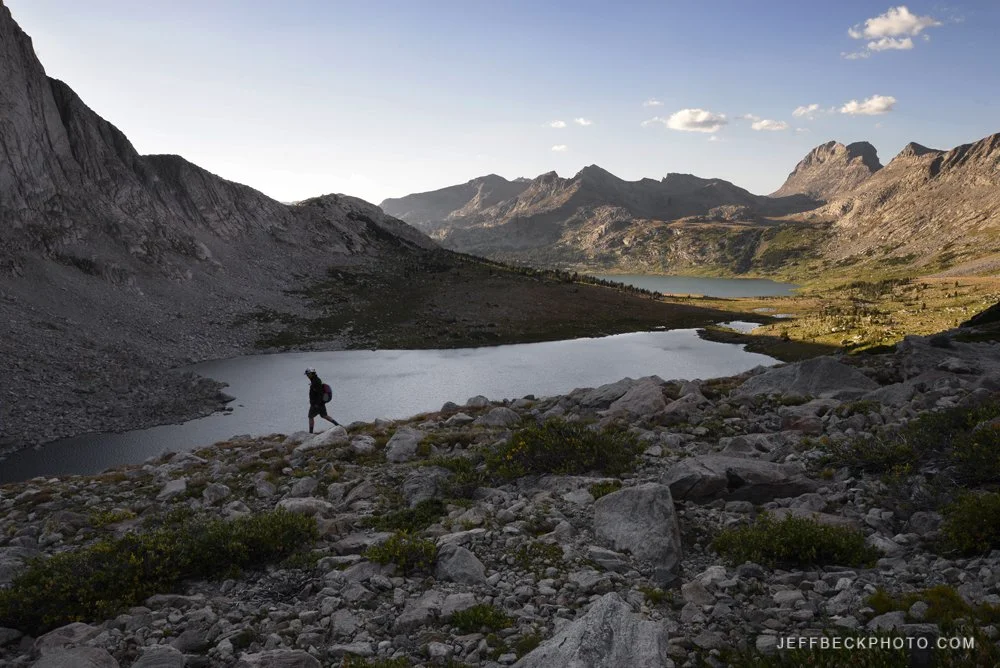Looking at these photos in December, I’m less disappointed with them than I was in April. As the intensity of the moment fades from my memory, from the tiny scorpion hanging out in the sand at the door of my tent, to the bite of a chill wind and even a few snowflakes, to the exhaustion of hours of cross-country travel, clamoring over slickrock ridges and across deep sand plains, to the dizzying ledges and walls that looked too steep to walk on, the images become better surrogates of the experience.
High Uintas Wilderness: Red Castle Lakes
Red Castle Lake, High Uintas Wilderness, Utah
Last Stand, High Uintas Wilderness, Utah
Mega Fauna, High Uintas Wilderness, Utah
The Classic, Lower Red Castle Lake, High Uintas Wilderness, Utah
The first week of July, I finally made it to Red Castle Lakes in Utah's High Uintas Wilderness. This place had been on my radar for at least a decade, but for whatever reason (maybe because the trailhead is two and a half to three hours from Salt Lake City) it wasn't a priority until a couple of weeks ago.
I decided to take the Bald Mountain route from the Cache trailhead. This is the most direct route into the upper Smiths Fork River drainage; only ten miles to Red Castle Lake. The Bald Mountain Trail boasts spectacular views as you skirt the east side of Bald Mountain and walk the broad ridge towards Squaw peak. The price: an immediate and steep climb and the knowledge that you'll have to climb back up to Bald Mountain after dropping into upper Smiths Fork.
The Cache trailhead start saves a mile of walking from the East Fork Blacks Fork trailhead, where there is a bridge, by fording the river. It was an inauspicious start to the trip when the first thing I did after missing the trail was fall in the river. On the bright side, I was passed the deep part when I slipped and was able to hold my shoes and socks mostly above the water as I fell.
I was impressed that my old Kelty backpack didn't let much water in and my new Kelty Ignite Dri Down bag stayed dry, as promised. Unbiased plug for Kelty brand outdoor gear. Kelty, if you're reading this, I'd be happy to review any gear you'd like to send me. ;-)
At first I didn't even realize I was off the trail. I just started following a dirt road towards the river, from the trail crossing sign on the East Fork Blacks Fork road. I didn't even see the nondescript trail cutting east just past a well used campsite maybe a hundred yards from the main road. I wasted a little bit of time and energy making my way over and around fallen timber as I cut across the mountainside, before intersecting the trail on a long steep switchback.
The rest of my hike was less eventful. Mostly just contending with jaw dropping views and infinite mosquitoes; and trying to create some images that could express some fraction of the beauty I was experiencing. Next time I backpack in to Red Castle Lakes, I'm going in September and/or I'm taking a mosquito head net. Seriously, the mosquitoes were relentless.
Red Castle, High Uintas Wilderness, Utah
Wilderness 50
Sunset, Upper Red Pine Lake, Lone Peak Wilderness, Utah
I'm honored to be one of 50 photographers chosen to be part of the Wilderness 50 Exhibit which opened September 3rd at the Natural History Museum of Utah on the 50th anniversary of the Wilderness Act. 50 photographs by 50 photographers were chosen from over fourteen hundred photographs submitted by four judges; Tom Till, James Kay, Stephen Trimble, and Rosalie Winard. The show is a commemoration of the signing of the Wilderness Act as well as a celebration of the beauty and diversity of Utah's wildlands, and runs thru December 14th in the Sky Gallery on the museum's top floor.
Downtown SLC Farmers Market
Zen Tree (Pigment Transfer to Board), Lake Mary, Wasatch National Forest, Utah
After six years as a full season Arts and Crafts vendor in the Downtown Salt Lake City Farmers Market, this season I've gone to part time. I'm at the market every other Saturday. Come check out my huge selection of one of a kind, hand made, transfer prints. These are the dates you can find me at the market: August 16, August 30, September 13, September 27, October 11, and October 25.
Contemplating Time
Tree Skeleton and Crescent Moon, Twin Peaks Wilderness, Utah
I’d long been drawn to this tree and photographed it on more than a few occasions before making this image. The shape of this dead tree arrests my eye every time I hike in the vicinity of Lake Blanche. On this night it was like a beacon.
Situated north of Lake Blanche, on the edge of a large block of resistant stone forming the terrace into which lakes Lillian, Florence, and Blanche are carved, among polished ribs of rock, the setting is perfect for capturing this dead tree cleanly against the western sky. On this night, two nights after the new moon, a waxing crescent moon was setting into a clear electric blue twilight and lining up quite nicely with the tree.
I had just left Lake Blanche where I had stayed till sunset’s bitter end, when the landscape could only be photographed in silhouette. I started towards the trailhead and was almost immediately stopped. The scene materializing before me reminded me of an image in my mind of a lone sculpted tree set against a crescent moon.
I dropped my pack, and worked quickly to set up my tripod. I changed lenses, from the wide angle I’d been working with, to a telephoto lens. Next, I dialed in my exposure, knowing that I needed to keep my shutter speed to one second or less in order to avoid blur from celestial movement. I had almost no time to spare as the light in the sky was quickly dying. I made several exposures while fine-tuning my composition by physically moving my camera position.
As I made my way down to the trailhead in the dark, I wondered how many hundreds of years it took this tree to reach such stately proportions. This once mighty tree has left behind a monument with extraordinary character, a visual legacy of its noble life.
This monument is a marker of time somewhat closer to mind than the lives of mountains or moons, and when set against the Earth’s cosmic timepiece, endlessly marking days, a deeper layer of meaning is achieved. The two symbols together move the image toward the iconic, the archetypal.
Pfeifferhorn Sunrise
This image accompanied my third blog post ever, back on February 1st, 2009. It was also my second most visited post at the time I switched to the new website. Sadly I’ve lost the original text and the comments. The image is from July 2006. It’s another view from another summer, from the summit of the Pfeifferhorn, this time at sunrise.
The original text described the situation: I had come to the alpine ridge prepared to spend the night in hopes of taking advantage of two golden hour photo sessions. My intent was to spend the night on the unnamed peak just west of the Pfeifferhorn and photograph the imposing west face of the Pfeifferhorn at sunset. After about five hours of hiking with a full pack, I realized I hadn’t given myself enough time to reach that unnamed summit, and decided to stay put on top of the Pfeifferhorn to photograph the sunset.
A bit later I decided to stay put for the night. Not a great place to camp, barely enough room for one body to lie flat without being jabbed by rocks, but I didn’t want to pick my way off the summit cone by headlamp, and I did want to be able to just roll out of my one-man shelter to photograph the sunrise. It was a lousy night sleep as the wind howled and I worried about the flashes of lightning I’d seen to the west, over the Oquirrhs, before turning in.
As it turned out, the night’s weather blew in a lot of clouds which made the sunrise much more colorful than the previous night’s sunset. I was glad I had made the effort to treat myself to two edge of day photo sessions, high in the Lone Peak Wilderness. My original post had a great closing line. I wish I could remember it, something about finding unique photographic perspectives on mountain summits. The effort always seems to be rewarded.
Lone Peak from the Pfeifferhorn
Fractured granite on the Pfeifferhorn summit frames the scene to the west, towards South Thunder Mountain and Lone Peak. From this vantage point the Wasatch looks more like the Sierra Nevada, with the high headwall of Hogum Fork blocking any view of civilization a mere eight miles west. Beams of light through broken clouds add to the drama on a mid-August afternoon atop the third highest summit in Salt Lake County.
This image was originally captured on 35mm Fujichrome Velvia in 1998. Wow, I can’t believe it was that long ago!? I’ve always liked the content of this image, but the weak color of this color transparency kept me from doing anything with it, back in the day when I had cibachrome prints made from my slides at the lab, and I was still years away from publishing anything on the internet.
With the advent of the digital dark room I can give new life to images like this, images that have a certain something that keeps them out of the trash bin, but not enough interest to make it into a portfolio, often by conversion to black and white. The lack of any bright colors and the high contrast light (tamed at capture with a Singh Ray grad ND filter) made black and white conversion the obvious choice. After the initial black and white conversion I used Photoshop layer masks to lighten the foreground rock and darken the sky to give this image some oomph.


















